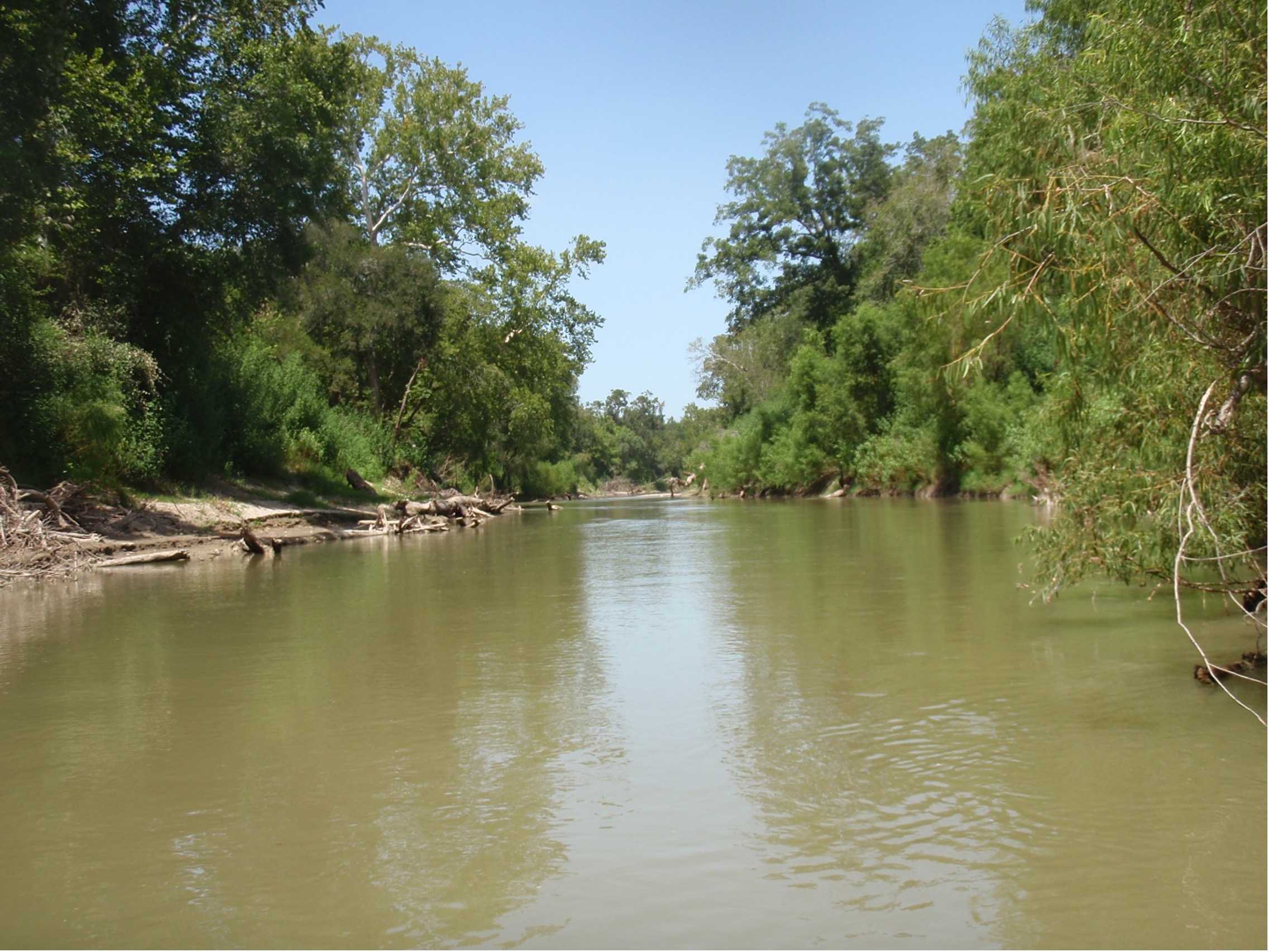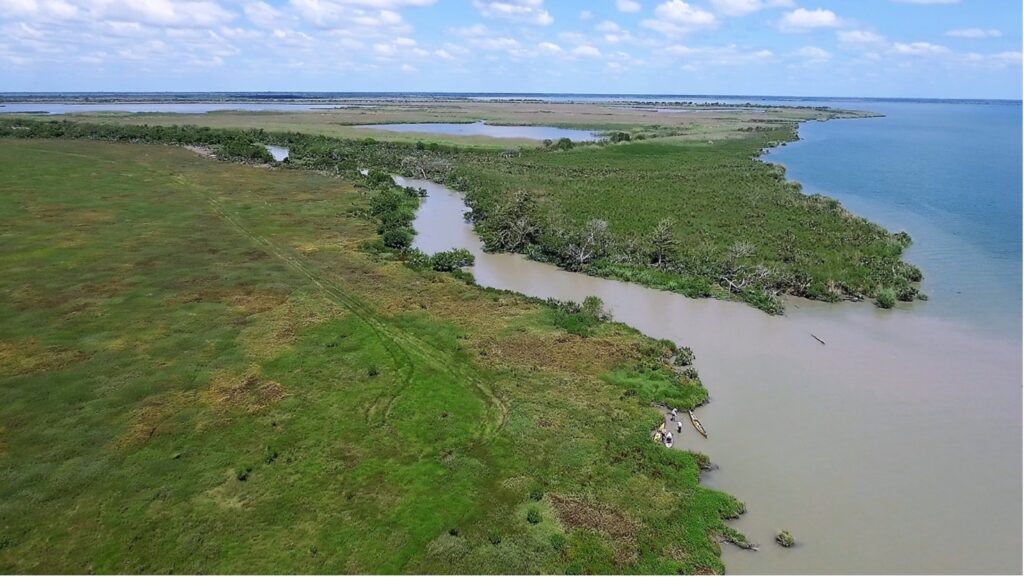Welcome to the San Antonio River Authority’s (River Authority) Basin Report Card series! The San Antonio River Basin Report Card is an annual assessment of twelve indicators that highlight the healthy aspects of the San Antonio River Basin and those that may need improvement. Each month we will highlight a specific indicator and its grade for the 2021 Report Card. Follow along to read how you can help improve the health of area creeks and rivers.
This month, we are discussing an important metric related to the clean aspect of the River Authority’s mission: instream flows. Read below and find out why this metric is critically important for the San Antonio River, how instream flows relate to freshwater inflows, and how you can help protect these clean freshwater resources. Let’s go with the flow!
What are instream flows?
Have you ever sat by the San Antonio River and thought, “How much water is flowing in it right now?” The answer to your question would be the instream flow, measured in cubic feet per second (cfs). These freshwater flows are critically important because they help maintain a healthy ecological environment for both river and bay and estuary ecosystems. Estuaries are transitional zones where freshwater and saltwater meet. The freshwater flowing into estuaries is called freshwater inflows. Estuary ecosystems rely on these inflows for nutrients and sediments as well as to regulate the amount of salt in these unique habitats.

Healthy waters upstream contribute to healthy waters downstream, where the whooping cranes and many other species rely on a clean habitat for survival.
How are instream flows affected?
Available water within river systems is finite, and there is often competition between human and environmental needs for those limited natural resources. Humans require drinking water and water for manufacturing, farming, power, and recreation. Aquatic and riparian habitats, including bays and estuaries, also need fresh water for fish, plants, and other wildlife species. As the population of Texas booms and the demand for water resources grows, the ability to effectively manage freshwater inflows into estuaries is becoming increasingly important. Fortunately, with the establishment of the Texas Instream Flows Program and the adoption of instream flow recommendations for the San Antonio River, progress is being made to monitor and maintain these vital water levels. See the full report card for insight into the lengthy process behind the instream flow recommendations.
How are instream flows measureD for the report card?
Regulatory issues for water are complicated, to say the least. The River Authority has developed a simplified approach to grade instream flows for this basin report card that can be easily understood by the community and maintain sufficient scientific validity. For simplicity, this basin report card indicator grade uses the Texas Commission on Environmental Quality (TCEQ) regulatory seasonal dry hydrologic condition (DRH) base flow data from only the USGS gage 08188500 on the San Antonio River at Goliad. Base flow is the amount of water found in a river between rainstorm events. First, separate scores for each seasonal DRH base flow were calculated using data from flows during the River Authority’s Fiscal Year (FY) 2020–2021. After determining these individual scores, the final grade was calculated by taking the average of the four seasonal base flow scores. For more information on this process, see the full report card.

The San Antonio River in Goliad
What was the grade for 2021?
The Instream Flows grade for 2021 is an A.
In FY 2020–21, 336 of the 365 days had an average flow rate at or above the seasonal DRH base flow condition for the four seasons at the USGS gauge on the San Antonio River at Goliad. All 29 days below the base flow conditions occurred between July–September 2020, when the base flow was 139 cfs. The overall grade is a good result, given that much of the San Antonio Watershed was identified by the National Integrated Drought Information System as being in abnormally dry, moderate, severe, or extreme drought conditions throughout several months of the fiscal year.
How will climate change affected instream flows?
Climate change will likely impact instream flow and, in turn, freshwater inflows. A 2016 summary produced by the Environmental Protection Agency (EPA) about what climate change means for Texas shows that despite the likely increase in heavy storms, the changing climate is expected to make water less available overall. Further evidence of the threat of climate change is identified in the City of San Antonio’s SA Climate Ready Report, which states that climate projections for the city’s future will likely be even hotter and drier. The report notes, “By 2040, we will likely experience maximum summer temperatures 4°F higher on average, 24 additional days over 100°F each year, and 3 inches less rain each year.” These predictions, coupled with the recent (2021) Intergovernmental Panel on Climate Change report, provide a clear picture of changes that the San Antonio River may soon face.
What can i do to protect instream flows?
No matter where you live in the San Antonio Watershed, you can help protect instream flows and freshwater inflows. Habitats and ecosystems are inseparably linked throughout the San Antonio Watershed – actions in the basin’s upper reaches can have impacts throughout the basin, including into the bay. Drought conditions, such as those we are currently experiencing in our watershed, can significantly affect the various human and environmental demands for freshwater.
Here are a few simple actions you can take today:
- Check out the current drought conditions and impacts on surface water in Texas.
- Be mindful of your own water use. Implementing water conservation practices throughout the year, particularly in Bexar County, can help maintain enough water in the Edwards Aquifer to keep spring flow entering the San Antonio River.
- Implement xeriscape landscaping using native vegetation. This landscaping is explicitly designed to reduce or eliminate the need for both supplemental water from irrigation and fertilizers.
- Build a rain garden to help capture and filter rainwater runoff on your property. Green infrastructure features like this help reduce water use, improve water quality, and reduce flooding.
The River Reach is back!
River Reach is a quarterly, 12-page newsletter that is designed to inform the San Antonio River Authority’s constituents about the agency’s many projects, serve as a communication vehicle for the board of directors and foster a sense of unity and identity among the residents of Bexar, Wilson, Karnes, and Goliad counties.
If you wish to be placed on the mailing list for River Reach, please contact us or complete the form.






